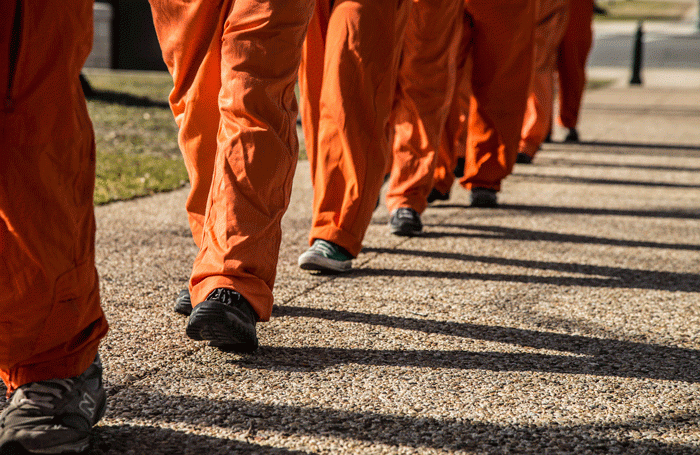
Just after President Trump’s Inauguration, a draft of an executive order was leaked which indicated his intent to seek a formal review on whether to resume ill-treatment. Of course, we know that during his campaign he famously stated that he would authorize waterboarding and “a hell of a lot worse.” But shortly after the leak, reports emerged of a pull-back from that policy. Though the president explained that this shift was due to the position of his Secretary of Defense, General Mattis, it is necessary to also look at former President Obama’s efforts to turn the page on America’s sordid chapter of torture. A barricade was indeed constructed to help guard against its return, and it is well worth noting this as a contributing factor.
After 9/11 Bush administration lawyers issued opinions stating that certain abusive treatment did not meet the legal definition of torture. Yet their interpretation of federal statutes and international law was considered erroneous far and wide once the memos were disclosed by an unauthorized leaker.
To relegate these distorted readings to the dustbin of history, Obama signed an executive order on his second day in office restricting all interrogations — by the military, the C.I.A. and private contractors — to only the techniques outlined in the Army Field Manual. Seven years later, the 2016 National Defense Authorization Act then codified that order into federal law.
The weight of this change was oddly overlooked during the presidential campaign when President Trump called for brutalizing terror suspects. The attention was on whether he would reinstate torture, not whether he could. Following a program of torment that twisted the law to authorize its use, this is somewhat understandable. But now Mr. Trump postures with proposed orders and statements that do nothing to overcome the statutory constraints that have been erected.
The army manual that newly regulates interrogation expressly prohibits the grossest harms, including waterboarding, beatings and sexual humiliation. This is significant since the Bush administration felt free to institute practices that were determined (behind closed doors) to not involve severe pain and suffering. But toying with what constitutes torture has become meaningless. Authorized techniques are clearly listed in the manual, otherwise they are illegal.
Under the new law, any modifications to the manual must be made public 30 days before taking effect. In addition, changes need to comply with “legal obligations” and the practices must “not involve the use or threat of force.” It is worth noting that the requirement that changes remain freely available is a lesson learned from experience in the Bush era as the memos on torture only survived while they were kept hidden from the public.
Today, this means that Secretary of Defense James Mattis (in consultation with the Attorney General, Director of the FBI and Director of National Intelligence) would need to stand behind the introduction of any additional techniques and their legality since the process is forced into the open by law. This raises a daunting barrier and from what Mattis said in his confirmation hearings, ill-treatment is off the table.
Yet President Trump appears to have no compunction about calling for abhorrent practices and may well see a political benefit.
Could more have been done to prevent a reconsideration of torture? Yes. The failure to prosecute those involved or provide redress to victims is a real missed opportunity to establish a firm deterrent, not to mention serve justice found in the laws on torture. Additionally, there is one technique in the manual (Appendix M) that has caused concern as it could open the door to sleep deprivation. This needs revision or removal.
International law is exceptionally clear on torture’s illegality, and notions of effectiveness are irrelevant. Nonetheless, the idea that “torture works” remains a useful argument for its proponents.
Aware of this, the Obama administration established the first federally funded scientific research program in decades to study the most effective interrogation methods. Behavioral scientists working in that program have compiled research that confirms what many experienced interrogators have been claiming for years — building rapport with a suspect draws out more reliable information, and faster, than harsh methods.
This project was led by the Research Committee of the High-Value Detainee Interrogation Group which commissioned numerous independent investigations (all legal and ethical) and integrated the results into training and practice. The group was assembled from various government agencies and created by Obama’s original executive order. It authorized scientists to explore a vital research question that has languished unstudied for over a half century.
For scholars who have investigated the utility of torture, this is particularly meaningful since historians have yet to uncover any government inquiries into its efficacy; that is, supporters have zero researched proof of its advantage. For this reason, the Senate Select Committee on Intelligence report on the C.I.A.’s use of torture, which found no evidence of its usefulness, is a document of historic proportions that should be fully published without delay.
Fundamentally, the Obama administration’s two-pronged approach of closing legal gaps and studying effective means of interrogation, in fact, helps illuminate the moral point at stake. Simply put, the relevant question has become:
How could an act that is manifestly prohibited and scientifically shown to lessen our chances of saving lives—all while destroying a person’s dignity—possibly be considered moral?
All of this will loom over the new president, and act as a bulwark against torture’s return. Let us hope it is enough.
Further Reading on E-International Relations
- Creating and Mirroring Monsters: Trump’s America and Europe’s Role in It
- Opinion – Nationalism and Trump’s Response to Covid-19
- Trump’s Foreign Policy Doctrine of Uncertainty
- America First Revisited: Trump’s Agenda and Its Global Implications
- Opinion – Re-election in Doubt: The Perfect Storm Approaches Donald Trump
- Opinion – Leading the Free World Through a Second Trump Administration